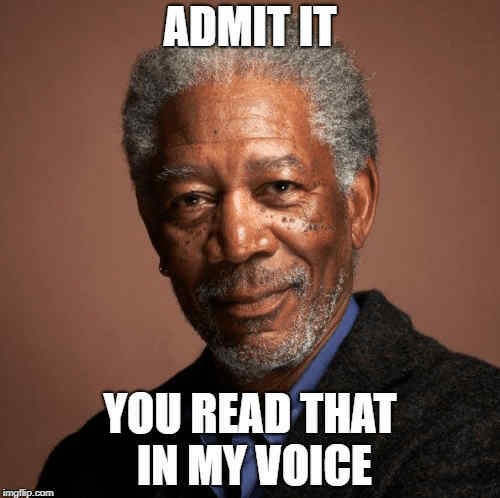Brand Voice vs. Brand Tone—What’s the Difference and Why It Matters
Define your brand, perfect your message—how voice shapes identity and tone drives impact.
If you’ve ever worked on branding (whether for a company, a personal brand, or even just the way you present yourself online) you’ve probably heard the terms brand voice and brand tone thrown around like they’re interchangeable.
Spoiler alert: They’re not.
Yet, so many brands (and honestly, so many people) mess this up. They either sound inconsistent, inauthentic, or worse, forgettable…
So today, let’s break it down. What’s the actual difference between brand voice and brand tone? Why does it matter? And how can you use both to create a brand that people actually remember?
Let’s get into it.
Brand Voice: Your Brand’s Personality That Never Changes
Think of brand voice as a person’s personality.
It’s who they are at their core. The way they naturally express themselves. The consistent essence that doesn’t change, no matter the situation.
Your brand voice should be recognizable, consistent, and uniquely you, across every platform, every interaction, every message.
Examples of Strong Brand Voices:
🔹 Nike: Motivational, empowering, action-driven. “Just Do It.”
🔹 Wendy’s: Bold, sarcastic, slightly savage. “We roast our competitors, not our beef.”
🔹 Apple: Minimal, sleek, sophisticated. “Think Different.”
🔹 Liquid Death: Rebellious, punk-rock, over-the-top. “Murder Your Thirst.”
No matter where you see their messaging—whether it’s an ad, a tweet, or a product description—these brands sound the same because they’ve locked in their brand voice.
Key Takeaway:
Your brand voice never changes. It’s the foundation of how you communicate.
Brand Tone: How Your Brand Adapts in Different Situations
Now, let’s talk brand tone.
If brand voice is your personality, then brand tone is how you adjust your communication depending on the situation.
Imagine you’re talking to your best friend vs. your boss vs. your grandma. You’re still you, but your tone changes depending on who you’re talking to and what’s happening.
Your brand should do the same.
Examples of Brand Tone in Different Contexts:
💥 Playful Tone (Social Media)
Nike’s Twitter might say:
👉 “Another Monday? Just get out there and dunk on it. #JustDoIt”
📢 Serious Tone (Crisis Communication)
Nike’s statement during a major event might say:
👉 “We stand with athletes around the world who use their voice for change. We remain committed to equality in sport and beyond.”
💡 Informative Tone (Website/Product Descriptions)
Nike’s website might say:
👉 “Engineered for ultimate speed and agility, the Nike ZoomX Vaporfly is designed to maximize energy return with every stride.”
Key Takeaway:
Your brand tone changes depending on the situation, but it always stays true to your brand voice.
Why This Matters: Consistency + Adaptability = Trust
Here’s where brands (and honestly, people too) screw up:
They either sound completely different every time they communicate…
(inconsistent, chaotic, untrustworthy)
OR
They use the exact same tone for everything…
(robotic, tone-deaf, out of touch)
You need both consistency (brand voice) and adaptability (brand tone) to create a brand that feels authentic, human, and relatable.
If your tone doesn’t adapt, you end up like that one person who only has one setting—whether it’s too serious, too salesy, or too casual for the moment (like cracking a joke at a funeral—yikes).
And if your voice isn’t consistent, people won’t recognize your brand at all.
Let’s look at a real example.
Case Study: How Airbnb Uses Brand Voice & Brand Tone Correctly
💬 Brand Voice:
Airbnb is all about belonging, inclusivity, and adventure. Their messaging is warm, inviting, and focused on experiences rather than just booking a place to stay.
Now, let’s see how their tone shifts depending on the context:
📱 Casual Social Media Post:
👉 “Cancel your weekend plans—this treehouse in Bali is calling your name. 🌿🌍”
📢 Official Statement (During a Crisis):
👉 “As a global community, we stand together in difficult times. We are working closely with our hosts and guests to ensure safety and flexibility for all.”
📖 Website Copy (Informational):
👉 “Discover unique stays and experiences all over the world. Whether it’s a cozy cabin in the woods or a penthouse in Tokyo, find a home that feels like yours.”
Same brand voice (warm, inviting, experience-driven), but the tone adapts to the situation.
That’s how you do it right.
How to Develop a Strong Brand Voice & Tone
✅ Step 1: Define Your Brand Voice
Ask yourself:
What are three words that describe your brand’s personality?
If your brand were a person, how would it sound?
What brands inspire you, and how do they communicate?
✅ Step 2: Adapt Your Brand Tone
Think about:
Who are you talking to? (Customers, industry professionals, general public?)
What’s the situation? (Social post, press release, marketing campaign?)
What emotion do you want to convey? (Excitement, urgency, reassurance?)
✅ Step 3: Test for Consistency
Look at your past messages—does your brand sound the same across platforms?
Create a brand voice guide with sample messaging for different scenarios.
Final Thoughts: Find Your Voice, Master Your Tone
The brands that stand out are the ones that understand this balance.
Your voice is what makes you recognizable.
Your tone is what makes you relatable.
And when you master both? That’s when people actually start paying attention.
So now the real question: What does your brand sound like?
See you in the next arena,
Andrew






👏👏